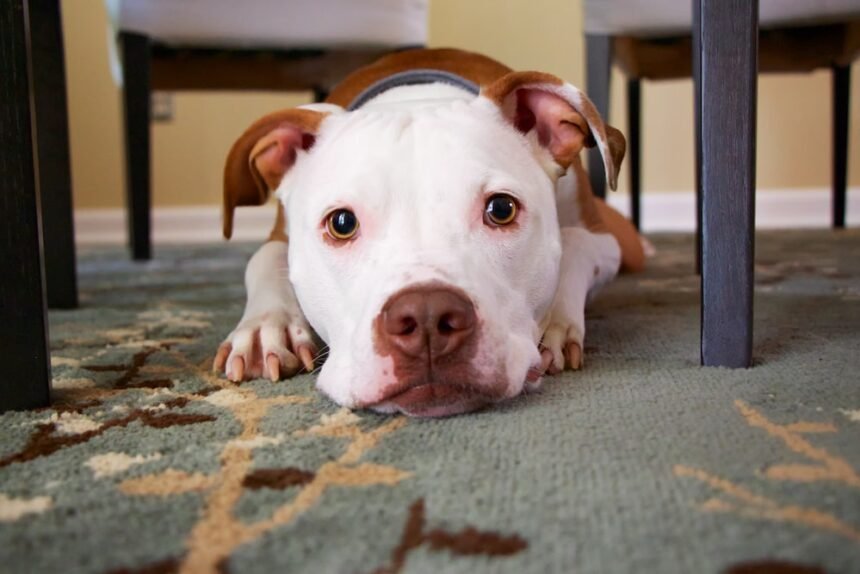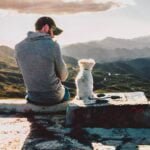House training your dog or puppy is an important aspect of responsible pet ownership. This comprehensive guide offers essential tips and strategies to ensure your furry friend becomes a well-behaved, house-trained companion. From establishing a potty training routine to planning for absences, we cover every step of the process.
Establishing a Potty Training Routine
Creating a consistent potty training routine is the cornerstone of successful house training. This section explores the significance of age-related bladder control, outdoor timing, and the importance of a designated bathroom spot.
- Age-Related Bladder Control: Understanding your puppy’s age-related bladder control is essential for a successful training routine. Puppies can typically control their bladders for about one hour per month of age, so it’s crucial not to exceed these limits between bathroom breaks.
- Crucial Moments for Bathroom Breaks: Recognizing key moments for bathroom breaks, such as right after waking up, during and after playtime, and after meals, is crucial to preventing accidents.
- Designated Bathroom Spot: Having a designated bathroom spot provides consistency for your pet. Learn how to choose the right spot and make it easily recognizable for both you and your puppy.
Rewards and Positive Reinforcement
Positive reinforcement is a powerful tool in house training. This section emphasizes the importance of timing and how to effectively use praise and treats to motivate your pet.
- Timing is Everything: Learn why immediate rewards are crucial in positive reinforcement. Delayed rewards can confuse your dog, so offering them immediately after the desired behavior is essential.
- Praise and Treats: Discover how to use verbal praise and treats effectively to encourage your dog’s good behavior. Consistency and quality treats are key to successful reinforcement.
Regulated Feeding Schedule
A well-regulated feeding schedule can significantly impact house training. This section covers feeding frequency based on age and the connection between feeding times and elimination.
- Feeding Frequency Based on Age: Understand how often to feed your puppy based on their age to align with their bathroom needs.
- The Connection Between Feeding Times and Elimination: Learn how to create a feeding schedule that works in harmony with your puppy’s natural elimination schedule.
Nighttime Strategies
Ensuring a peaceful night’s sleep for both you and your puppy is vital. This section addresses strategies for a good night’s sleep and proper handling of nighttime wake-ups.
- Preparing for the Night: Timing of Water Dish Removal: Before bedtime, remove your puppy’s water dish approximately two and a half hours before they sleep to reduce nighttime bathroom breaks.
- Handling Nighttime Wake-Ups with Care: If your puppy wakes up during the night, respond with care. Keep interactions minimal, guide them to their designated bathroom spot, and ensure both you and your puppy get a good night’s sleep.
Supervision: The Ultimate Preventative Measure
Constant supervision is crucial to prevent accidents. This section underscores the importance of continuous monitoring and provides practical tips.
- The Importance of Constant Supervision: Keeping a close eye on your puppy when they are indoors is crucial to avert accidents. Recognizing signs of impending elimination helps you respond proactively.
- Tethering Your Puppy: A Valuable Training Tool: Tethering your puppy to you or a nearby piece of furniture with a leash is a practical approach when you’re not actively training or playing, ensuring they remain within sight.
- Recognizing Signs of Impending Elimination: Understanding your puppy’s cues and responding promptly by taking them outside to their designated bathroom spot is key to preventing accidents.
- Extending House Training to the Yard: Adapting house training techniques for outdoor spaces ensures your puppy understands where it’s acceptable to eliminate.
Confinement when Unsupervised
Confinement is a valuable strategy when you can’t actively watch your puppy. This section delves into the role of confinement, proper sizing of the confinement space, crate training, and handling bathroom breaks upon return.
- The Role of Confinement in Training: Confinement helps prevent accidents when you can’t supervise your puppy and teaches them to hold it until you release them for a bathroom break.
- Properly Sizing the Confinement Space: Select an appropriate size for your puppy’s confinement area to maintain motivation for holding it until a bathroom break.
- The Option of Crate Training: Crate training is an effective form of confinement. When returning from hours of confinement, take your puppy directly to their designated bathroom spot for a bathroom break.
- Immediate Bathroom Break Upon Return: Upon returning from confinement, offer your puppy a bathroom break in their designated spot to reinforce the connection between the designated area and elimination.
Confinement strategies provide a safe and effective means of house training when you’re unable to actively supervise your puppy. Proper sizing, crate training, and immediate bathroom breaks upon return all contribute to successful house training.
Handling Accidents with Grace
Accidents are an expected part of the house training process. This section covers how to handle accidents with patience and positive reinforcement.
- The Normalcy of Occasional Accidents: Understand that occasional accidents are typical during house training. Your puppy is still learning, and setbacks are part of the process.
- Swift Action: Responding to Indoor Accidents: React swiftly and calmly to indoor accidents. Without making a fuss, take your puppy to their designated outdoor bathroom spot. Offer praise and a treat if they finish there.
- Why Punishment is Counterproductive: Punishing your puppy for indoor accidents is counterproductive and can hinder the training process. Focus on positive reinforcement.
- Effective Cleaning Techniques for Soiled Areas: Thoroughly clean and remove odors from soiled areas to deter your puppy from returning to the same spot. This ensures a fresh and clean environment for your training efforts.
Planning for Absences
Planning for absences is essential for those times when you can’t be with your puppy. This section explores considerations for absences, arrangements for bathroom breaks, paper training as an alternative, and the use of sod boxes and pet pee pads.
- Considerations for Those Away from Home: If you need to be away from home for an extended period, consider the implications for your puppy. Ensure they have arrangements for their needs, even in your absence.
- Arrangements for Bathroom Breaks: Arrange for someone, like a responsible neighbor or a professional pet sitter, to take your puppy outside for bathroom breaks. This ensures that their needs are met, even when you’re absent.
- Paper Training as an Alternative: If you’re unable to arrange for someone to take your puppy outside, consider paper training as an alternative. This involves confining your puppy to an area with enough room for sleeping, playing, and eliminating. Use pet pee pads, newspapers, or a sod box in the designated elimination area.
- The Use of Sod Boxes and Pet Pee Pads: Sod boxes and pet pee pads offer indoor elimination alternatives. Sod boxes involve placing sod in a container, while pet pee pads can be placed in the designated area. Both options require consistent use to avoid confusion.
Planning for absences ensures that your puppy’s needs are met, even when you can’t be there. By considering the options and making suitable arrangements, you maintain the progress of your house training efforts.
Final Thoughts
House training your dog or puppy is a journey that requires time, patience, and dedication. By following the comprehensive guide presented here, you can navigate this process effectively. Remember the following key points:
- Consistency is Key: A well-established routine and consistent positive reinforcement are your allies in this endeavor.
- Stay Alert and Responsive: Pay close attention to your pet’s cues and be prompt in responding to their needs.
- Avoid Punishment: Punishing your dog for accidents is counterproductive and can undermine the training process. Instead, focus on positive reinforcement.
- Be Prepared for Absences: Plan ahead for times when you can’t be with your puppy to ensure their well-being.
- Clean Thoroughly: Properly cleaning soiled areas helps maintain a clean environment and deters your puppy from reusing them.
With time and dedication, your furry companion will become a well-mannered and house-trained member of your family. The bond you build during this process will be rewarding for both of you.We hope this comprehensive guide has provided you with the knowledge and strategies needed to successfully house train your dog or puppy.







